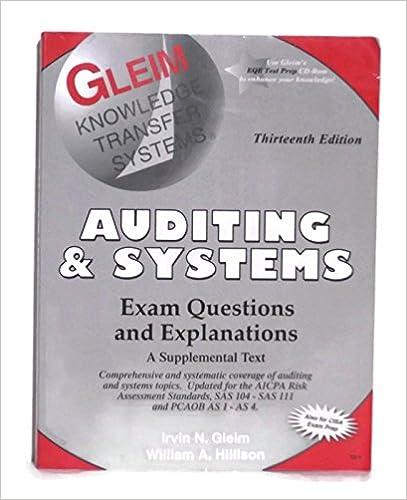Question
11) Consider each of the following scenarios and state whether the variable in question is a confounder, or whether more information is needed to assess
11) Consider each of the following scenarios and state whether the variable in question is a confounder, or whether more information is needed to assess confounding. Choose from Yes / No / or Need more information (1pt), and provide a very brief explanation for your selection (1pt ea.; 10 total pts)
a) In a cohort study of liver cancer among males, incidence rates of liver cancer among men with unhealthy alcohol use are compared to incidence rates of liver cancer among non-drinkers. Is gender a confounder in this study?
b) A case-control study of the risk of beer consumption and oral cancer among men (overall OR = 2.8). In this study, cigarette smoking is associated with beer consumption and is a risk factor for oral cancer among both beer drinkers (OR=3.6) and nondrinkers (OR=3.7). Is cigarette smoking a confounder in this study?
c) In a study of the risk of pulmonary hypertension among women who take diet drugs to lose weight, the crude relative risk of pulmonary hypertension comparing diet drug users to non-users is 17.0 and the age adjusted relative risk is 5.0. Is age a confounder in this study?
d) In a cohort study examining the association between physical activity and cardiovascular disease risk, the investigators stratified the population by hormone replacement therapy use. Among users of hormone replacement therapy, participants who were physically active had a relative risk of 0.63, compared to participants where physically inactive. Among subjects who did not use hormone replacement therapy, participants who were physically active had a relative risk of 0.61, compared to participants where physically inactive. Is hormone replacement therapy a confounder in this study?
e) In a retrospective cohort study of U.S. Army veterans, investigators examined the association between exposure to active combat and risk of suicide, with the hypothesis that combat-involved servicemembers may be more likely to experience PTSD, which leads to greater risk of suicide. The unadjusted relative risk of suicide associated with active combat was 5.1. After adjusting for PTSD, the RR for this association was 1.0. Was PTSD a confounder in this study?
Step by Step Solution
There are 3 Steps involved in it
Step: 1

Get Instant Access to Expert-Tailored Solutions
See step-by-step solutions with expert insights and AI powered tools for academic success
Step: 2

Step: 3

Ace Your Homework with AI
Get the answers you need in no time with our AI-driven, step-by-step assistance
Get Started


